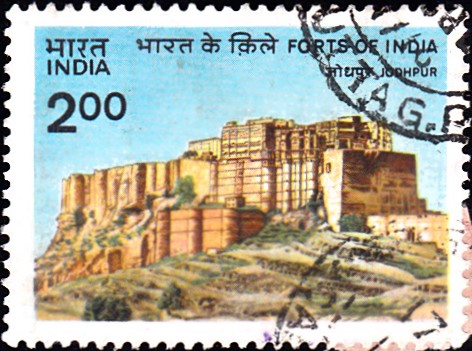
The Forts of India
Complete set of 4 nos. of commemorative postage stamp on the Indian Forts : Gwalior (Madhya Pradesh), Vellore (Tamil Nadu), Simhagad (Maharashtra) and Jodhpur (Rajasthan) :
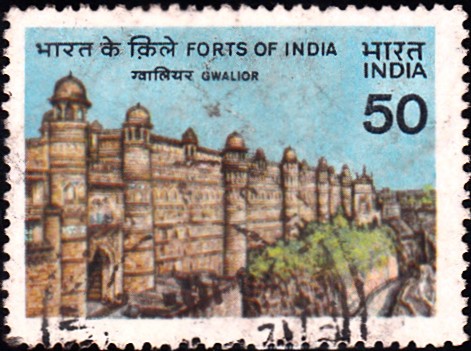
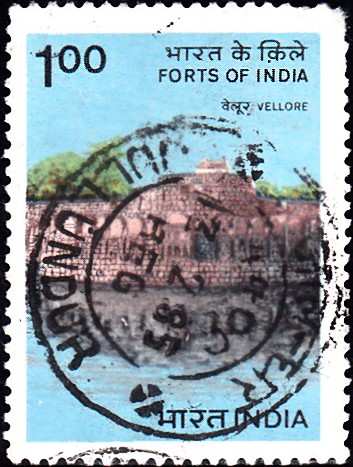
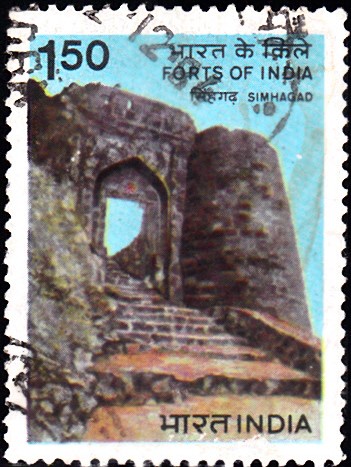
 Issued by India
Issued by India
Issued on Aug 3, 1984
Issued for : The Indian Posts and Telegraphs Department is happy to issue a set of four stamps on the Forts of India.
Description of Designs : The 50, 100, 150 and 200 P stamps depict the Forts of Gwalior, Vellore, Simhagad and Jodhpur respectively. The stamps have been designed by India Security Press, Nasik. The First Day Cover has been designed by Alka Sharma and the cancellation by Nenu Bagga.
Type : Stamps, Postal Used
Colour : Multicolour
Denomination : 50, 100, 150 & 200 Paise
Overall size : 3.91 x 2.90 cms.
Printing size : 3.55 x 2.54 cms.
Perforation : 13 x 13
Paper : Unwatermarked gummed coated stamp paper
Number printed : 15,00,000 each
Number per issue sheet : 35
Printing process : Photogravure
Designed and printed at : India Security Press
About :
- Built by titans and lit by the glory of fire, blood and love – the grandest sights in India – The Forts of India, stand as befitting ‘monuments’ to the pride, courage and chivalry of the rulers and people of India who relentlessly strove against invading armies to preserve their freedom and to keep alive their faith and their culture.
- GWALIOR :
- The Gwalior Fort was built by a Rajput Chieftain named Suraj Sen in gratitude to Gwalipa, an ascetic who cured him of leprosy. Between 6th and 12th century AD the Fort changed hands from one dynasty to another, from Gurjar Pratihars of Kannod to Kuttubudin. The Fort remained in the hands of Muslim Kings of Delhi until 1438, when during the invasion of India by Timur, Beersingh Deo, a Tomar Rajput made himself Master of Gwalior. Raja Mansingh, the greatest of the Tomars was a man of culture and refinement. He built the Mansingh Palace and the Gujri Mahal and a School of Music, where India‘s greatest musician – Tansen, was a student. After the death of Mansingh in 1517 AD the Fort passed into the hands of Ibrahim Lodi and subsequently to Babar. With the decline of the Mughal Empire, Gwalior passed into the hands of Maratha powers, represented by the Scindias.
- Like most other Forts, the Gwalior Fort is situated atop a hill, some 300 feet above the plains. The hill is 1¾ mile long and the breadth varies from 600 to 2200 feet. The enclosing wall is 30 feet high. The main attractions within the gates are gigantic Jain sculptures carved along the rock face of the Fort, Man Mandir, Gujri Mahal, Sas Bahu Temple and Teli-ka-Mandir. Each of these monuments bear a distinct stamp of individuality and all are noted for the simplicity of style and rugged beauty of strength.
- VELLORE :
- The Fortress of Vellore is situated about 125 kms. west of Madras. Built in this historical town, the Fort is one of the most perfect specimens of military architecture in the South. The ‘Ethaladurg‘ or Land Fort was built by Chinna Banni Nayak a subordinate Chief under Sada Sivaraya and Sri Ranga Maharaj, the Vijaynagar Kings in the third quarter of the 16th century AD. The Sultan of Bijapur seized Vellore by about the middle of the 17th century AD. In 1676 AD the Fort was captured by the Marathas who were in turn ousted by Daud Khan of Delhi in 1708 AD. The Fort was under the charge of Dost Ali, Nawab of Carnatic who gifted it in 1710 AD to his son-in-law, whose son Mohammed Ali kept the Fort as a stronghold for nearly 20 years. In 1760 AD the Fort was occupied by an English garrison, and finally after the fall of Srirangapatnam and the death of Tipu Sultan, the English kept Tipu‘s sons and daughters in captivity in Vellore Fort.
- The fortification consists of a main rampart broken at irregular intervals by round towers and rectangular projections. The main walls are built of massive granite stones surrounded by a broad moat fed with water by sub-terranean drains from the Suryagunta tank.
- SIMHAGAD :
- Formerly known as Kondhana, the earliest mention of this Fort is to be found in Isamis Futuh-us-Salatin, when the Fort was taken over by Muhammad-bin-Tughlaq from the Kolis. The Fort was again captured by Malik Ahmed Nizam, the founder of Nizamshahi dynasty of Ahmadnagar in 1483 AD. The Fort was given in Jagir to Shivaji’s father Shahaji Bhosle by the Nizamshah of Ahmadnagar. The Fort had to be handed over to the Bijapur Sultan, from whom Shivaji captured the Fort by force, and it remained in his possession for a long time with the exception of a short period. In the beginning of 1670 AD Shivaji’s Infantry General Tanaji Malusare captured the Fort from the Mughals, but lost his life in the action. From this incident springs the story that Shivaji renamed the Fort as Simhagad after Tanaji. From Shivaji the Fort further changed hands, to Aurangzeb, to Marathas, to Mughals, to the Peshwas and finally to the British.
- Shaped like an axe with a short handle, the Fort occupies on area of about two-square miles. The top is very rugged and surrounded by strong fortification on all sides, and is flanked by 33 towers or bastions. Only those parts of the hill which are naturally protected by steep precipices are left without walls and it is the western part of these natural fortifications that Tanaji Malusare is said to have scaled in his invasion of the Fort.
- The Fort is situated about 15 miles to the south west of Pune, 4322 feet above sea level and 2300 feet about Pune plains.
- JODHPUR :
- The historic fort of Jodhpur was founded by Rao Jodha in the year 1459 AD, who shifted his capital from Mandore to present day Jodhpur. Its original names were ‘Chintamani’ and ‘Mordhaj’ but later on it came to be called as Meherangarh – The Majestic Fort.
- The Fort stands out magnificently on an isolated rock about 400 feet above the city. It is the finest example of beautiful architecture which can rightly be described as ‘Poetry in Stone’. Long, slim minarets touching the sky and countless fine latticed screens stand out against the huge walls, varying in height from 20 to 120 feet. The Fort has two principal entrances namely FATEH POL (Victory Gate) and JAI POL (Glory Gate) besides five other subsidiary entrances. Inside the Fort, there are magnificent Royal palaces, built by various Rathore rulers of Marwar from time to time. An attempt has been made to recreate the traditional atmosphere in this historical monument, by housing various items all over the Fort as part of a Museum. Besides the Royal palaces, the temples of ‘NAGNECHAJI’, the family deity of the Rathores of Kannauj, and the ‘Chamunda Devi Temple’ draw regular devotees and visitors.
- (The above text is based on material published elsewhere).


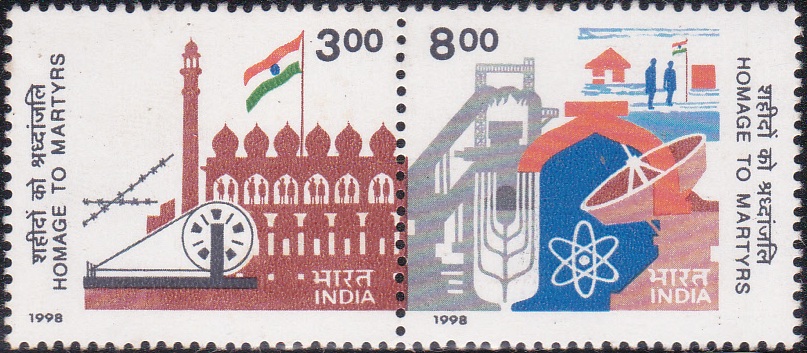

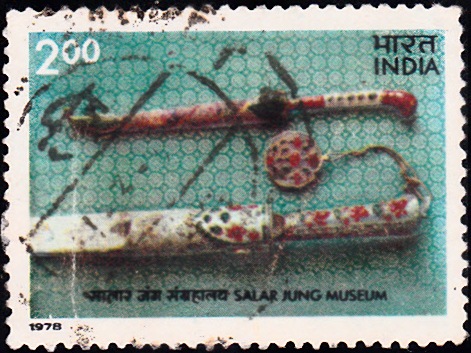
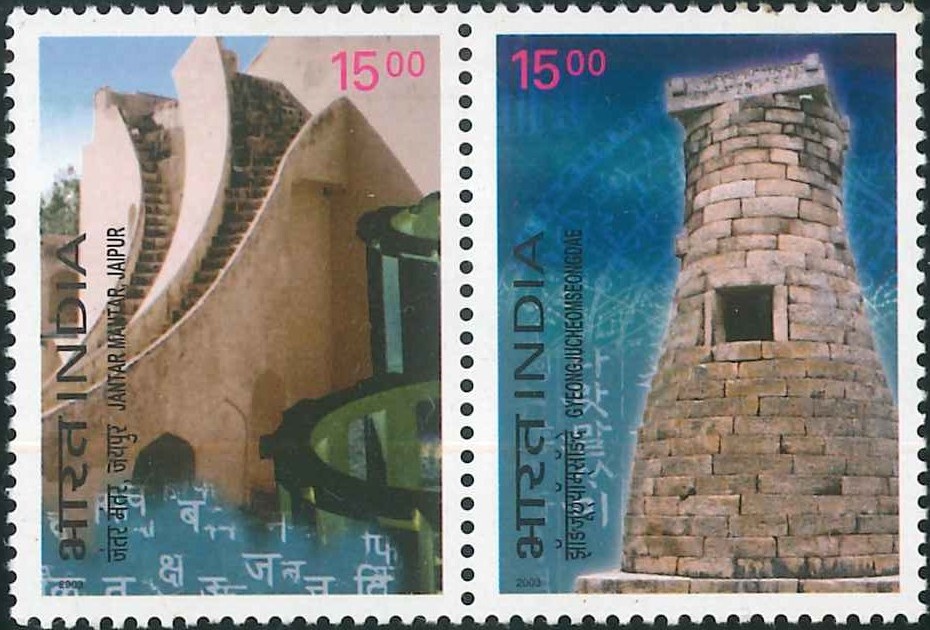
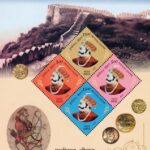
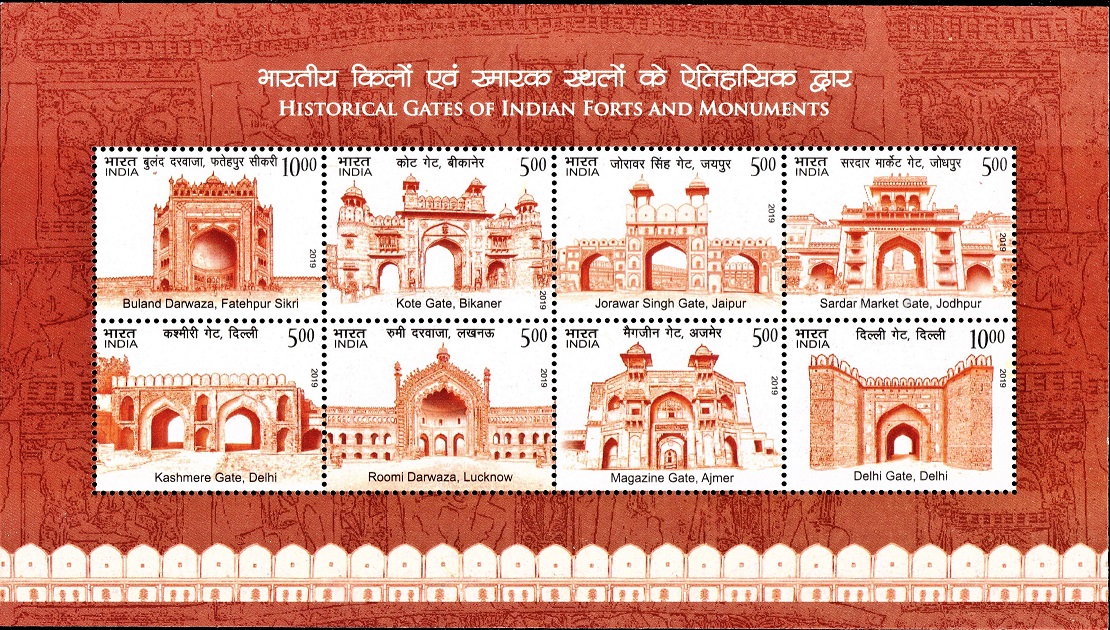
[…] where the statue of Mahatma Gandhi inspires generations of students. The design also depicts the Gwalior Fort with an inset of the […]
[…] A set of four stamps titled ‘Forts of India’ was issued on 3.8.1984. The Department of Posts now issues a set of two stamps on ‘Forts of […]